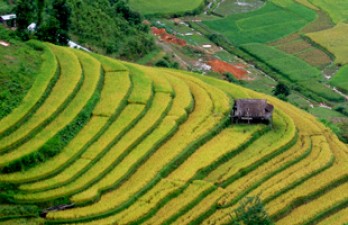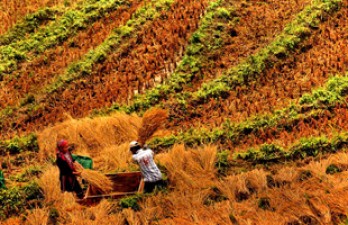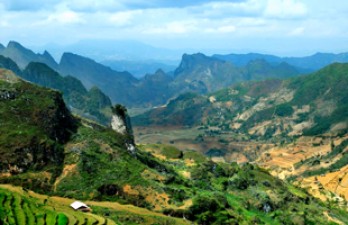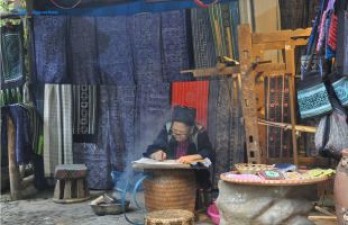Exploring the villages in Bac Ha - Handspan Travel Indochina
2Bac Ha, a district in Lao Cai Province, is one of the fantastic destinations in the Northwest of Vietnam. It attracts tourists by its pristine natural landscape and mild climate. Coming to Bac Ha, you can admire the scenery and visit the featured attractions. Besides, you will also have a chance to discover the traditional cultural activities of the Mong and Tay people here. Let’s explore the villages in Bac Ha with Handspan Travel Indochina!
Through this article, you can learn about these villages in Bac Ha below.
Ban Pho
Ban Pho is one of the villages in Bac Ha preserving the traditional cultural identity of the Mong ethnic people here. Going through winding roads close to Hoang Lien mountainside, you will reach Ban Pho, about four kilometers from Bac Ha Town’s center. Around the way, you will see corn and rice fields and plum forests with flowers or fruits.
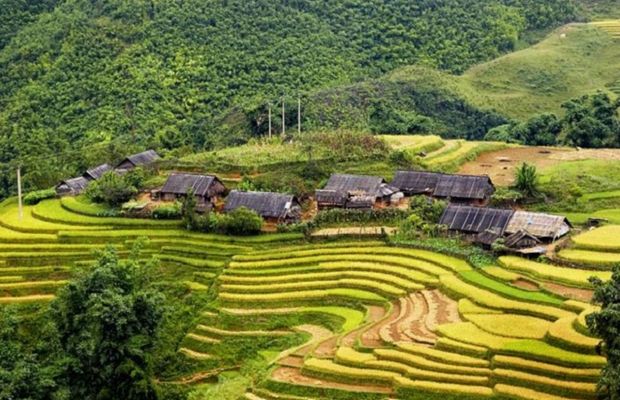
Ban Pho in Bac Ha
Like other villages in Bac Ha and mountainous areas, Ban Pho appeals to tourists through its fresh atmosphere and rustic natural scenery. Coming here, you will see the Hmong people’s houses clinging to the mountainside, outstanding in the vast mountains and forests. The houses here are mainly made of wood, with the floors lower than the ground. Besides adoring the scenery, you can talk with locals and learn about their daily life. The Hmong people in Ban Pho live primarily on cultivation, farming on terraced fields, medicinal plants, brocade embroidery, and forging agricultural tools.
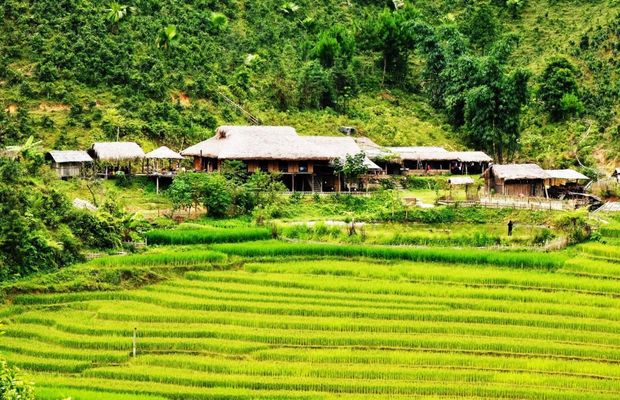
Houses in Ban Pho
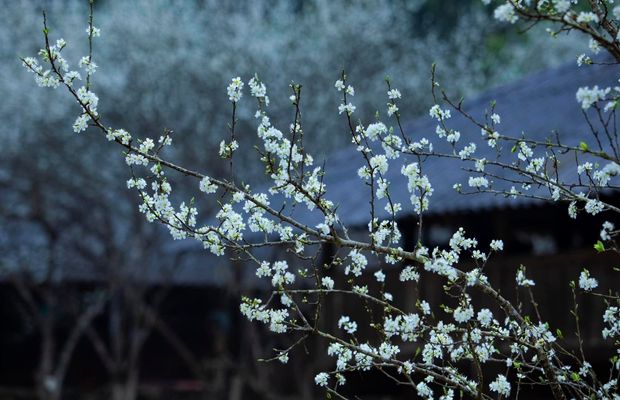
Plum blossom in Ban Pho
Especially you should try Ban Pho corn wine, also known as Bac Ha corn wine. This kind of wine has been a familiar drink of the people here for a long time. Indeed, sitting together and sipping a cup of spicy corn wine served with buffalo meat upstairs kitchen is an unforgettable experience in Ban Pho.
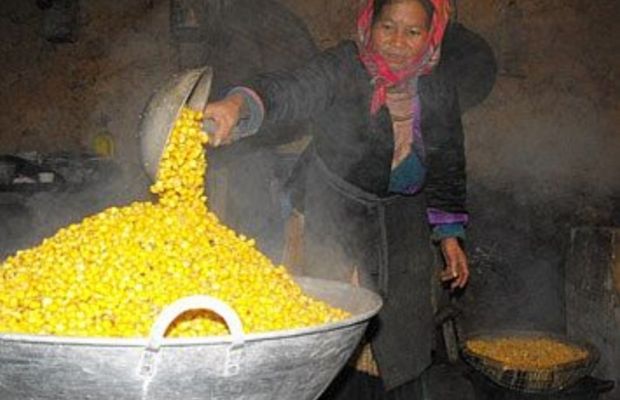
Making Ban Pho corn wine
Let’s come here, immerse yourself in the peaceful atmosphere and make friends with local people!
Ban Lien
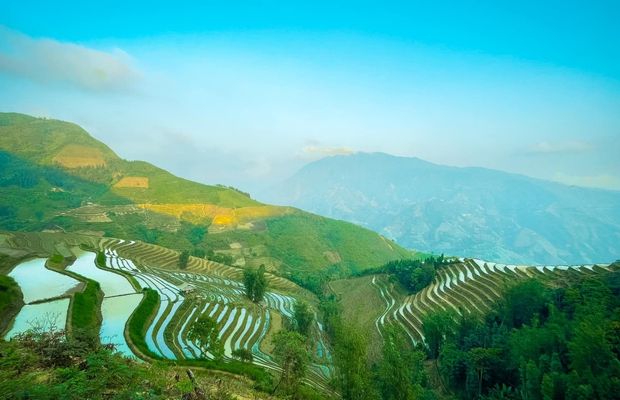
Ban Lien in Bac Ha
Ban Lien, about 30 kilometers from Bac Ha Town’s center, is also among the worth-visiting villages in Bac Ha. Coming here, you will be amazed by the magnificent scenery and friendly local people. Let’s find exciting experiences in Ban Lien you may not want to miss.
Trekking around the village and admiring the scenery
Ban Lien, with unspoiled natural scenery, is a fantastic place for trekking in Bac Ha. Around the way, you can catch up with palm forests, tea hills, waterfalls, stilt houses leaning on the mountainside, and stunning terraced rice fields.
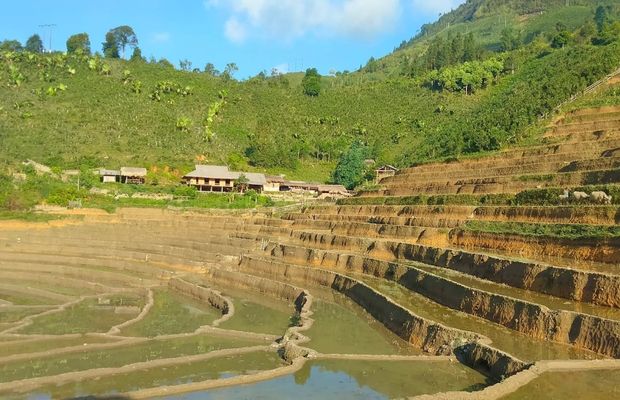
Ban Lien's terraced rice field in autumn
The village has its own unique characteristics in each season. While you can see the floating seas of clouds and plum and peach blossoms in spring, in summer, Ban Lien is impressive with terraced rice fields looking like a giant mirror and magnificent waterfalls. In autumn, the rice turns yellow, which makes the scenery more brilliant. In winter, Ban Lien has many flowers blooming all over the mountains.
Staying in a homestay
Visiting Ban Lien, you may want to stay overnight in a homestay, which brings many exciting experiences. Staying in a homestay, you will have a chance to learn about the Tay local people’s culture. Their house has a fire stove in the middle, try local specialties, harvest rice, make cassava cakes, dig bamboo shoots, catch stream fish, etc. Ban Lien Forest Homestay and Tra Hills Homestay are featured homestays in Ban Lien.
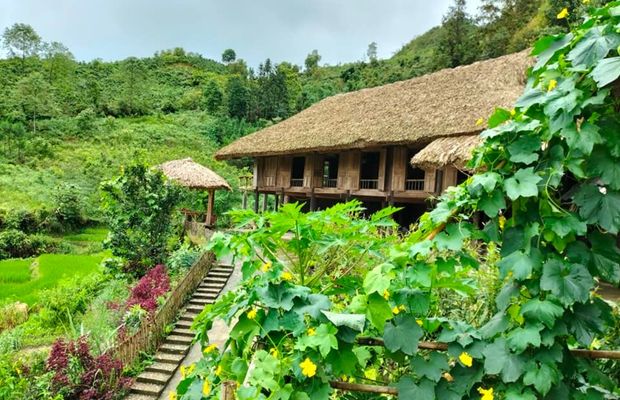
Ban Lien Forest Homestay
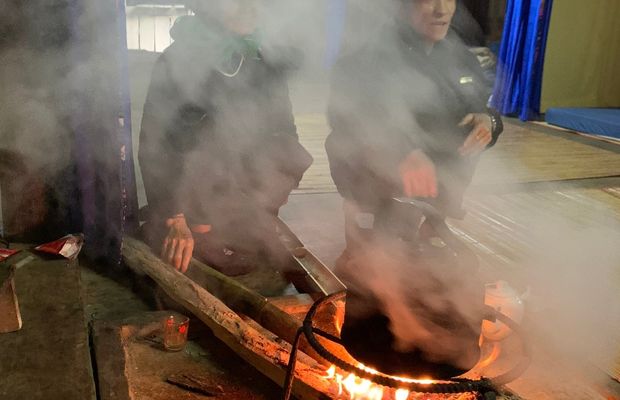
Ban Lien Forest Homestay's fire stove
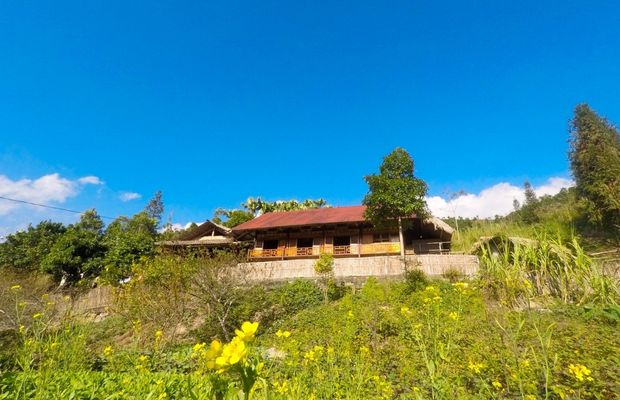
Tra Hills Homestay
Picking tea
Ban Lien is suitable for growing tea thanks to the cool and mild climate and soil conditions. This destination is famous for its organically grown Shan snow tea, which has a sweet and aromatic flavor. Coming here, you can join picking tea leave and learn the making tea process.
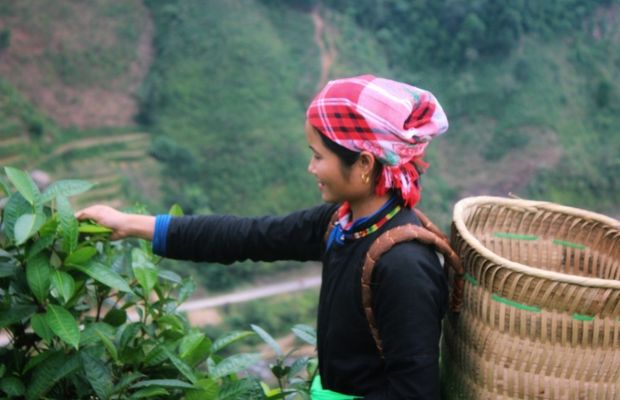
Picking tea leaves in Ban Lien
With exciting activities and beautiful landscapes, Ban Lien is one of the great villages in Bac Ha you should visit.
Ta Chai
Like other villages in Bac Ha, Ta Chai also attracts tourists through its pristine landscapes and awesome people. Coming here, you will have a chance to walk around the villages on small winding roads, admire stilt houses with unique architecture, and participate in daily activities with the locals.
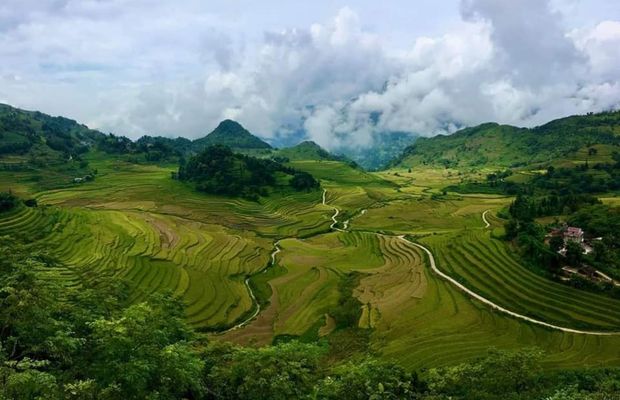
Ta Chai
Besides, enjoying Xoe dancing is one of the most exciting activities in Ta Chai. This dance has a combination of the French Valse, which makes it more vibrant, joyful, and different from the Muong people and Thai people’s dancing. Today, Xoe dance has become an indispensable activity of the Tay ethnic group in Ta Chai. You can catch up with local people in traditional costumes and dance at festivals such as the Long Tong festival, forest worshiping ceremony, new rice festival, etc. Especially in spring, you can join the Xoe festival held on the 5th day of the 1st lunar month to pray for good crops. In the crowded atmosphere with the sound of drums, gongs, and trumpets, everyone will hold hands and immerse themselves in the dance.
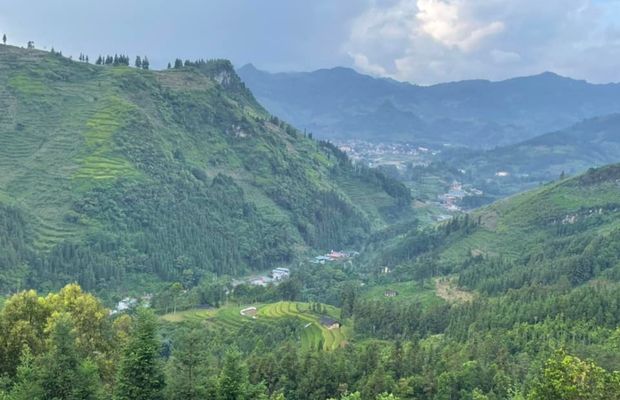
Ta Chai
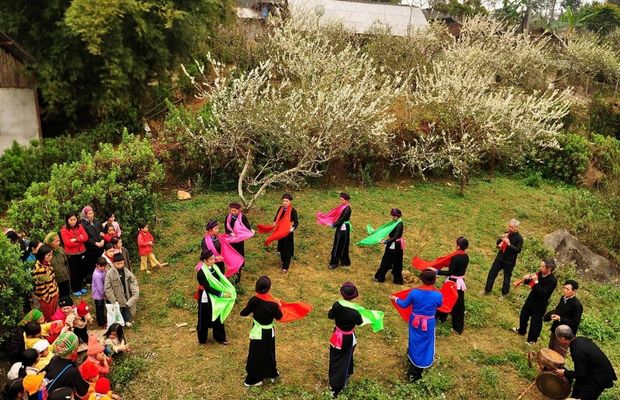
Xoe dancing in Ta Chai
Let’s come to Ta Chai, immerse yourself in nature, and feel the warm life of ethnic minority people!
Na Hoi
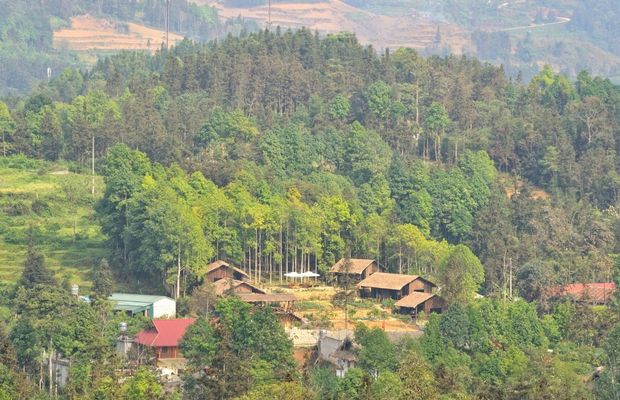
Na Hoi
Located one kilometer from Bac Ha Town’s center, Na Hoi commune is also worth visiting. Coming here, you will see the green color of rice and corn fields, mountains, plum forests, and many wooden stilt houses surrounding the villages in the commune. Besides, you can feel the tranquil life and learn the customs, habits, and daily life of local ethnic minorities: Hmong, Nung, Tay, Dao, and Phu La. Besides Tay people’s Xoe dancing, you will see the Hmong people weaving, sewing, and embroidering traditional clothes. In addition to discovering the unique culture, you can also enjoy many dishes made by the local people, such as upland sticky rice, grilled chicken, bitter bamboo shoots, etc.
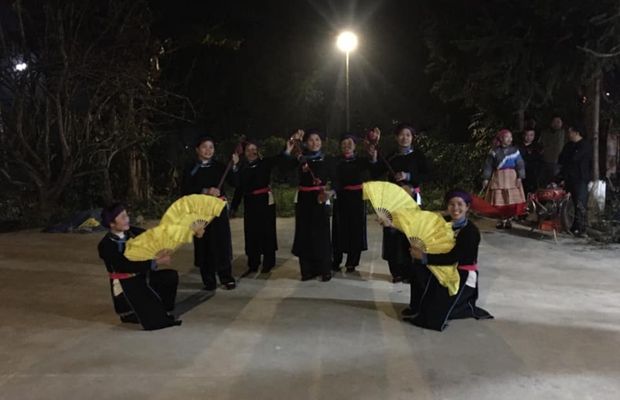
Xoe dancing in Na Hoi
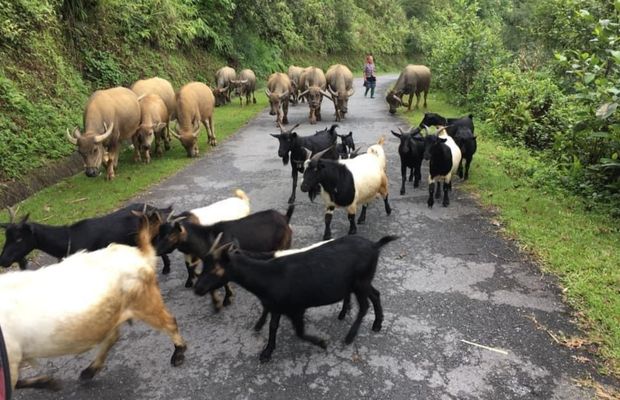
A daily activity of local people in Na Hoi
Na Hoi’s early spring festival, held on the 15th of January in the lunar calendar, is one of the famous festivals in Bac Ha. This festival is held to wish for a new year with a favorable climate and good crops. You will see special folk dances, performances, and traditional games at the festival.
Ta Van Chu
Ta Van Chu is also a commune with many villages in Bac Ha that you should not miss. It is in the middle of two high mountain ranges on both sides of the Chay river, the Nan Sin and Cao Son ranges, with a cool and fresh climate all year round. This spot is exceptionally stunning in spring, with pure white Ta Van plum blossoms in every corner.
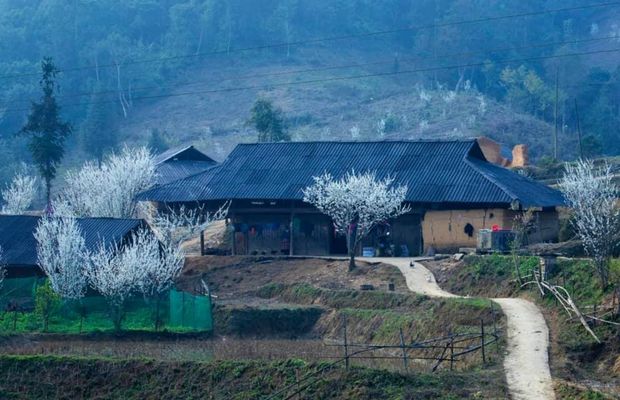
Ta Van Chu
Visiting Ta Van Chu, you will have the opportunity to explore the diverse ecosystem with majestic mountains, hundred-year-old trees, and perennial Shan Tuyet tea trees. The combination of the villages, mountains, and forests creates favorable conditions for tourists to have a complete experience in Ta Van Chu. The deeper you walk inside the forest, the more beautiful the area is.
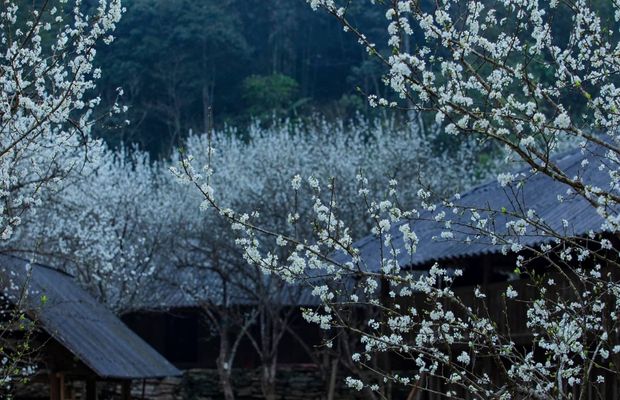
Plum flower in Ta Van Chu
Besides admiring the scenery, you can visit the Thien Long Cave (or Rong Cave) here. The cave has a pristine and mysterious beauty with many layers of large stalactites.
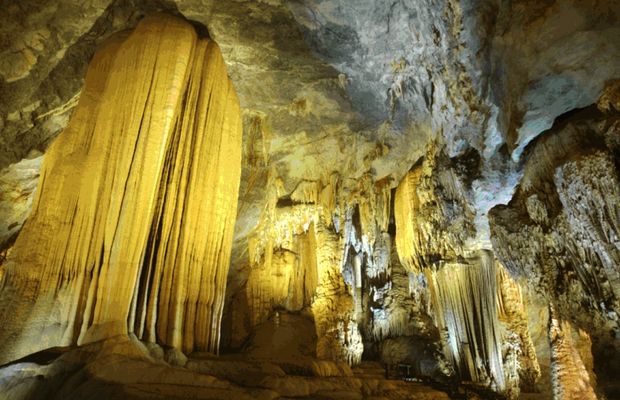
Thien Long Cave
Ta Van Chu is home to the Hmong ethnic minority, who live mainly on growing rice, plums, and corn. Coming here, you will catch up with simple walled houses and rustic homestays, and local people in their traditional costumes.
In conclusion, you have just learned about five amazing villages in Bac Ha. For more detailed information or a tailor-made tour in Bac Ha, don't hesitate to contact our Handspan team. Besides, let's refer to our tour packages in Sapa and Northern Highland here: Sapa and Northern Highland.
__logo.png)
__hanoi-water-puppets.jpg)
__angkor-wat-blue-reflections.jpg)
__vientiane-buddha-park-monks.jpg)
__bagan-dhammayazika-dusk.jpg)

